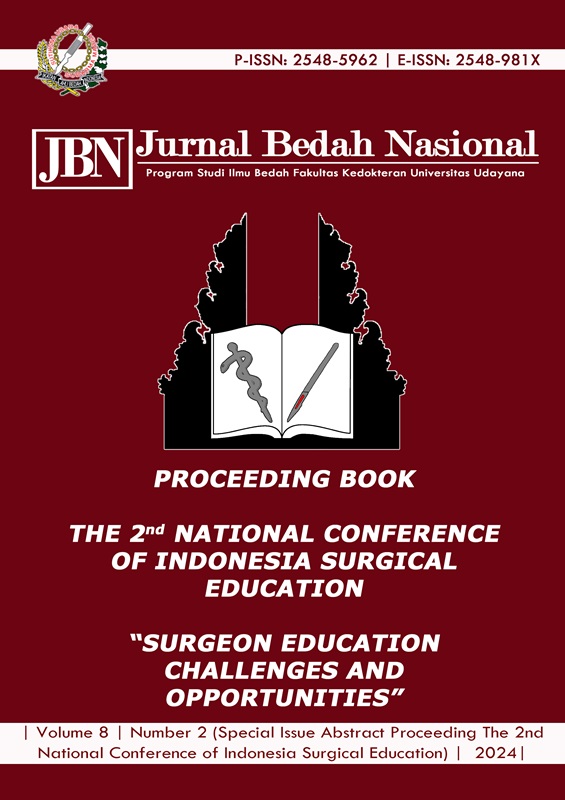029. Management of Injury to The Right Lung Due to Penetrating Trauma to The Chest: A Case Report
Abstract
Background: Thoracic trauma is a significant cause of mortality, in fact, many patients with thoracic trauma die after reaching the hospital. However, many of these deaths can prevented with prompt diagnosis and treatment. Less than 10% of blunt chest injuries and only 15 to 30% of penetrating chest injuries require operative intervention. Most patients who sustain thoracic trauma can be treated by technical procedures within the capabilities of trained clinicians. Case: We reported a case of 44-year-old female having a penetrating wound in her left chest because of her ex-husband stabbed her with a knife. The patient felt pain and the vital signs were stable, from the physical examination there were no abnormalities found. The surgeons did anterior thoracotomy and evacuated the knife within 2 hours since the patient arrived in the ER, and turned out the knife injured the right lung and there was bronchopleural fistula appeared. The surgeons did repair of the fistula and debridement of the wound and primary suturing carried out. The patient discharged 3 days after hospitalized with good clinical condition. Conclusion: This case report presents a successful management of a stable patient with penetrating chest trauma.
Downloads

This work is licensed under a Creative Commons Attribution 4.0 International License.
Program Studi Ilmu Bedah Fakultas Kedokteran Universitas Udayana. 
This work is licensed under a Creative Commons Attribution 4.0 International License.






